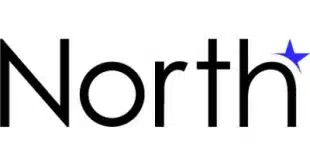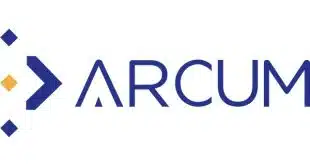Enthusiasts are betting Bitcoin ATMs will be the next step in taking the digital currency from monetary curiosity to mainstream acceptance.
Since the first Bitcoins were mined in 2008, evangelists for the fledgling digital currency have dreamed of making Bitcoin as ubiquitous as dollar bills. To say the least, the road to omnipresence has been anything but smooth.
Unless a consumer is ambitious enough to mine Bitcoins, which requires a deep knowledge of cryptography, batteries of high-powered computers, and countless hours to crack the currency’s algorithmic code, Bitcoin exchanges have been the only other outlet for obtaining the currency.
Most consumers, however, do not know what a Bitcoin exchange is. Or they have become wary of them since Mt. Gox, which reportedly handled 70% of all Bitcoin transactions, collapsed earlier this year after news that about 850,000 Bitcoins belonging to its customers were reported stolen.
So consumers need a more convenient, reliable way to buy Bitcoin if it is to become a mainstream currency. Enter the Bitcoin ATM, a device designed to make it easy for consumers to buy Bitcoins and convert them into cash. The machines work like the traditional ATMs millions of consumer use every day to withdraw funds from, and make deposits to, their bank accounts.
“One of the challenges Bitcoin has faced gaining broader acceptance is that it is not easy to buy, sell, or convert Bitcoins into hard cash,” says George Peabody, a partner for Menlo, Calif. based payments consultancy Glenbrook Partners LLC. “ATMs offer faster, easier access to Bitcoins than exchanges.”
‘Less Time And Risk’
To use a Bitcoin ATM, a consumer must have a digital Bitcoin wallet. Within the wallet is a quick-response (QR) code that, when scanned at the ATM, authenticates the wallet holder. The wallet holder then follows the on-screen prompts to either insert paper money into the machine to buy a specific denomination of Bitcoin or instruct the machine to extract a specific value from the Bitcoin wallet as cash. Consumers can also print out a paper copy of the QR code and scan it at the ATM to initiate a transaction.
To more accurately verify a wallet holder’s identity, Las Vegas-based ATM marketer Robocoin has implemented palm-scanning technology on its machines. Bitcoin wallet holders must first register their palm print with Robocoin before using one of its ATMs.
The advantage of Bitcoin transactions conducted through an ATM vs. an exchange is real-time settlement, which removes the risk that the value of the Bitcoin will decline before it is deposited in the buyer’s account. It can take up to seven days to clear a transaction through a Bitcoin exchange, during which time the currency’s value can fluctuate based on whether speculators bid the price up or down. That’s a scary thought for most consumers not used to such wild swings in value in currency.
“For consumers that want to use Bitcoin right away to make purchases, buying Bitcoin through an ATM involves less time and risk,” says Peabody.
An added benefit of Bitcoin ATMs is that consumers can buy a portion of a Bitcoin, such as $100 worth, as opposed to an entire Bitcoin, which as of mid-October was trading around $360. Exchanges do not sell or trade fractions of Bitcoins.
“Being able to buy a portion of a Bitcoin makes the currency more accessible to consumers,” says Haseeb Awan, chief management officer and co-founder of BitAccess Inc., an Ottawa, Canada-based Bitcoin ATM maker.
Bitcoin Evangelists
Because Bitcoin ATMs are so new, there is no accurate count as to how many have been deployed by the handful of manufacturers producing them.
About 50 ATMs that dispense Bitcoins and convert them to cash for withdrawal have been deployed worldwide, according to Evan Rose, president and chief executive of San Diego-based ATM maker Genesis Coin Inc., which has sold about 30 ATMs. BitAccess has sold 50 units since January, 35 of which have been deployed. Robocoin has sold 100 units since last October.
Further, there’s a wide variety of machines ranging from countertop kiosks that allow consumers to only purchase Bitcoin to free-standing kiosks that facilitate purchases and convert Bitcoins into cash by selling them back to exchanges. So far, exchanges have been the primary buyers of Bitcoin ATMs because they have the resources to quickly resell Bitcoins converted to cash or they can hold the Bitcoin as an investment.
In addition to exchanges, individual investors are purchasing and deploying Bitcoin ATMs. Some of these owners are reportedly using the machines to amass Bitcoins sold for cash as a speculative investment. Otherwise, they sell their Bitcoins obtained through ATMs to Bitcoin exchanges, according to Rose.
The wide variation in price for Bitcoin ATMs reflects their capabilities. A buy-only Bitcoin ATM averages $5,000, while a multifunction kiosk (including buy and sell) can start at $15,000.
Most manufacturers are Bitcoin evangelists turned entrepreneurs who view their mission as expanding Bitcoin’s accessibility and utility. “The ability to purchase Bitcoin through an ATM is the first step toward driving acceptance at the point of sale,” says Beth Robertson a payments consultant in the Baltimore area. “Someone that buys Bitcoin through an ATM at a merchant location is likely to turn around and spend some of it with that merchant, provided the merchant accepts Bitcoin.”
Investors who are deploying Bitcoin ATMs are lured into the game by the potential to earn significant sums from transaction fees, which range from 2% to 5% of the amount of the transaction. Given Bitcoin’s value, ATM owners have the potential to make their machines profitable without generating high volume.
‘A Luxury Good’
“Most of the transactions we are seeing within our network are high-dollar values,” says Cailen Sullivan, chief executive and co-founder of Los Angeles-based Zenbox, a Bitcoin ATM network manager.
Zenbox currently manages four Bitcoin ATMs in such locations as convenience stores and supermarkets in the Los Angeles area, and the D Hotel in Las Vegas. The machines are averaging 10 transactions a day, Sullivan says. Consumers can buy or sell Bitcoins through the machines, taking cash withdrawals for each sale.
As a network manager, Zenbox receives a fee from ATM owners for tracking all transactions through the network, loading cash into ATMs and removing it, and performing ATM maintenance. In July, the company hired money-transport service Garda to pick-up and replenish cash in its ATMs. Conversion of Bitcoins into cash within the Zenbox network is performed by Expresscoin Inc., a provider of digital wallets.
“Our goal is to build the largest network of Bitcoin ATMs in the United States,” says Sullivan, who adds Zenbox plans to start deploying its own ATMs. The company expects to have 200 ATMs in its network by year’s end. “We can support any Bitcoin ATM on the market,” he adds.
As with traditional ATM deployers, Bitcoin ATM owners seek out high-traffic locations that allow 24-hour access to the machine or close to it. “If the machine is only accessible during business hours, consumer access is limited, which keeps volume down,” says Awan of BitAccess.
To gain entrée to a merchant’s store, Bitcoin ATM owners lease space from the merchant. Zenbox goes a step further to induce merchants to locate an ATM in their store by coordinating publicity campaigns to help drive traffic to that merchant.
“Not a lot of Bitcoin ATMs have been deployed, so it is still a pretty big deal when one is,” says Glenbrook’s Peabody. “And if a Bitcoin ATM can attract the desired clientele then it makes sense for the merchant to have one on premise.”
How much store traffic a Bitcoin ATM drives is unknown and probably won’t be known for some time, according to payments experts. Genesis Coin’s Rose is skeptical that the machines are an inducement to the average consumer not all that familiar with Bitcoin to seek them out. “I think Bitcoin is still a luxury good for most people,” he says.
Maze of Laws
One of the hurdles slowing down deployment of Bitcoin ATMs in the United States is the maze of state laws for dispensing cash. The laws cover who can own an ATM and set out rules ATM owners must follow to dispense cash and accept deposits through their machines. In addition, the federal government has its own ATM regulations.
“The regulatory environment in the United States is slowing the deployment of Bitcoin ATMs,” says Robocoin’s growth manager, Sam Glaser.
At the same time, while the ATM business is choked with laws, digital currencies are so new there are few regulations governing them in the U.S., leaving vast room for uncertainty. Nor is the regulatory landscape any clearer outside the U.S. “France says our machine is an ATM, while other countries consider it a vending machine,” says Jon Hannis, co-founder of Project Skyhook, a Portland, Ore.-based Bitcoin ATM maker.
Project Skyhook’s machines, which run on open-source software, only allow consumers to purchase Bitcoins. The company opted to write open-source applications on the belief that it would be easier for software developers to create new applications that can broaden the utility of its ATMs.
Until the regulatory landscape becomes clearer, Robocoin’s Glaser recommends ATM operators strictly interpret money-dispensing laws to ensure compliance.
Broadening Utility
One way Bitcoin ATM owners can increase transaction volume is to enable purchases through their machines. Zenbox, for example, plans to enable gift card purchases through its ATMs, as well as support the buying and selling of other digital currencies.
Robocoin is also thinking about broadening the utility of its ATMs, envisioning them as a conduit for cross-border money remittance. The company plans to release its second generation Bitcoin wallet later this year, which will include a feature to facilitate person-to-person money transfers.
“There is an opportunity to serve the underbanked by enabling money remittance using Bitcoin,” says Glaser. “Consumers can send money on one end and a consumer on the other can withdraw it from a Bitcoin ATM.”
Consumers receiving a Bitcoin transfer will be sent an identification code to their mobile phone or email address. The funds can be withdrawn as cash from a Bitcoin ATM by entering the code. Plans are also in the works to enable transfers directly between Bitcoin wallets over the Internet, Glaser adds.
Despite all the hype around Bitcoin ATMs, payment experts do not envision traditional ATM makers adding support for Bitcoin to their current line of machines. The biggest hurdle, according to consultant Robertson, is that ATM makers’ primary clientele is banks, which have not embraced Bitcoin.
Another reason traditional ATM makers won’t support Bitcoin, according to Rose, is that Bitcoin ATM owners have to worry about currency risk beyond what cash is sitting in the machine, i.e. the fluctuating value of Bitcoin. “Operating this kind of business is not nearly as straightforward as running a standard ATM,” he says.




